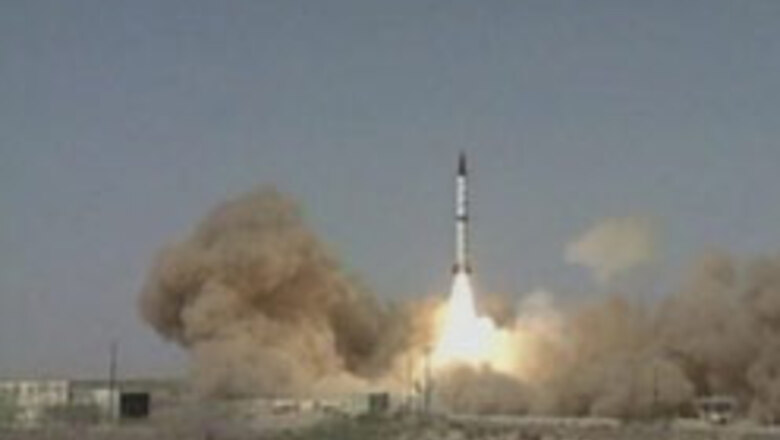
views
New Delhi: Pakistan may be building a third reactor to produce plutonium, expanding its nuclear arsenal and accelerating a nuclear arms race with India, the Institute for Science and International Security said Friday.
Satellite images show that Pakistan is building a new nuclear reactor that can produce weapons-grade plutonium.
The Washington-based Institute of Science for International Security says a picture taken on the 3rd of June shows work progressing rapidly on the reactor at the Khushab nuclear site near Islamabad.
The report compiled by former UN weapons inspector David Albright has warned that this could contribute to an atomic arms race in South Asia. Plutonium-based weapons pack more explosive power into smaller, lighter packages than those made with uranium.
Pakistan probably needs the plutonium ``to improve the quality of its nuclear arsenal and build a new generation of lighter, more powerful weapons,'' says the report by David Albright and Paul Brannan at the Washington-based Institute on its Web site.
The nuclear program is for peaceful purposes, the Associated Press cited an unidentified official from the Pakistan Atomic Energy Authority as saying yesterday, without commenting directly on the report.
Pakistan tested nuclear weapons in May 1998 in response to a trial by India earlier that month. Since April 2003, the South Asian neighbors have improved ties after having fought three wars since independence from the U.K. in 1947. India and Pakistan have restored communications and sporting links as part of the so-called confidence building measures.
Work at a third reactor at Khushab, about 160 kilometers (100 miles) southwest of the capital, Islamabad, in eastern Punjab province, is progressing at a faster rate than the construction of a second plant built during the past 10 months, the institute said in its report, citing commercial satellite imagery on June 3.
The first reactor at the site became operational in 1998. The three aren't monitored by the International Atomic Energy Agency, the United Nations nuclear watchdog, the institute said.
By developing plutonium "Pakistan may want warheads small enough to fit on the cruise missiles it is currently developing,'' it said. ``Plutonium-based weapons can have more explosive yield in smaller, lighter packages than weapons based on highly enriched uranium.''
Pakistan and India have tested missiles capable of carrying nuclear warheads over the years. Some of the weapons are able to hit each other's cities.
The two countries on Feb. 21 signed an agreement on reducing the risk of accidents with nuclear weapons as part of the peace process.
With agencies inputs
















Comments
0 comment